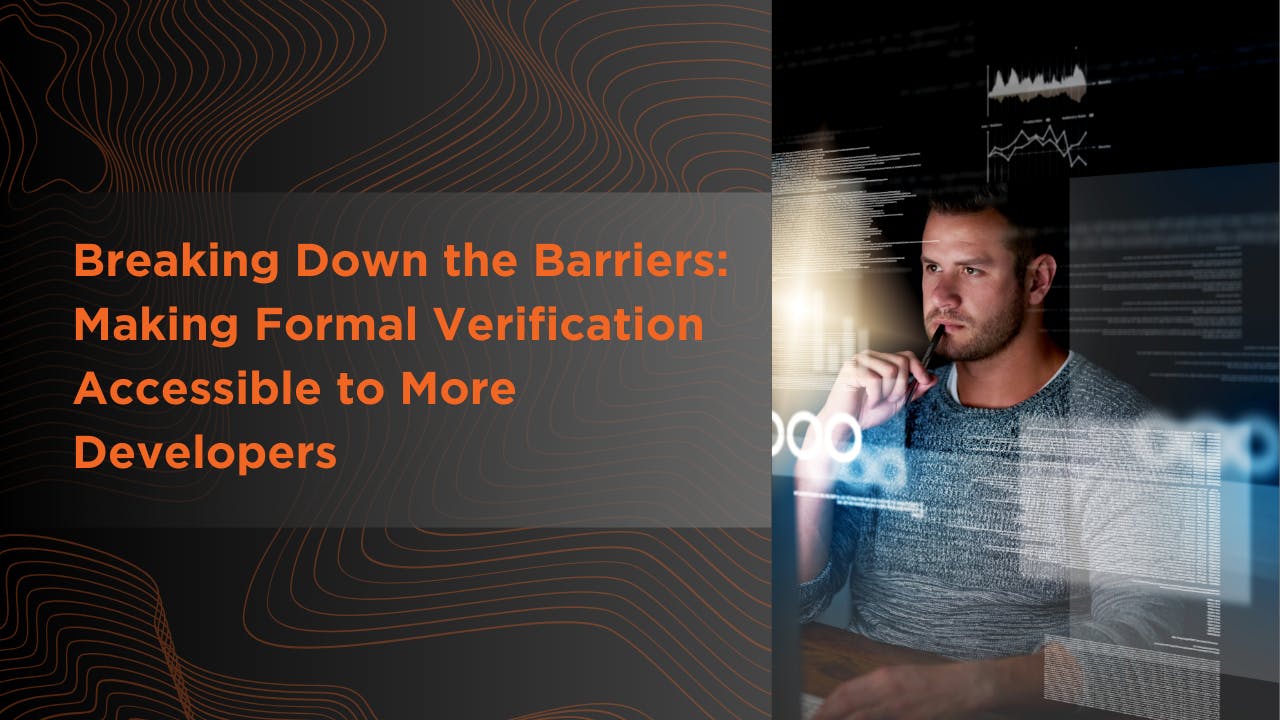Breaking Down the Barriers: Making Formal Verification Accessible to More Developers
May 26, 2025

Key Takeaways:
- Memory vulnerabilities, like buffer overflows, pose significant security risks, as highlighted by CISA and the FBI.
- Formal verification offers a mathematically precise approach to ensure code correctness and security.
- TrustInSoft is democratizing formal verification, making it practical and accessible for a wider audience of developers.
In today's digital landscape, software security is paramount. Warnings from entities like CISA and the FBI underscore the critical need to address vulnerabilities such as buffer overflows. These vulnerabilities can lead to severe consequences, from system compromise to data breaches. That said, a robust method for ensuring code correctness and security exists: formal verification.
Understanding the Threat: Memory Vulnerabilities
Memory vulnerabilities are weaknesses in software that can be exploited by attackers. Buffer overflows occur when a program writes data beyond the allocated memory buffer. Other common memory vulnerabilities include use-after-free errors and integer overflows.
Attackers can exploit these types of vulnerabilities to: compromise systems, steal sensitive data, launch denial-of-service attacks, and inflict significant reputational damage. Consider the severity of buffer overflows. CISA and the FBI have even called software with buffer overflow issues "unforgivable". The financial and operational costs associated with memory vulnerabilities are substantial, making proactive prevention crucial. Think of it as an investment in long-term security and stability.
The Accessibility Gap: Why Formal Verification Seemed Out of Reach
Several barriers have historically hindered the widespread adoption of formal verification. These include:
- Specialized Expertise: A deep understanding of mathematical logic and formal methods was generally considered necessary.
- Complex Tooling: Unintuitive interfaces and extensive configuration requirements made the tools difficult to use.
- High Implementation Costs: Significant upfront investments were needed for tools and training. Some believe the long-term benefits outweigh the initial costs.
- Integration Challenges: Incorporating formal verification into existing development workflows (Agile, CI/CD, V-model) presented difficulties.
- Performance Concerns: Long analysis times and resource-intensive computations raised concerns about performance.
It’s also worth addressing the misconception that formal verification is solely for safety-critical or high-security applications. While it's certainly valuable in those contexts, its benefits extend to a much broader range of software projects.
Democratizing Formal Verification
TrustInSoft helps developers and testers overcome these barriers by making formal verification accessible and emphasizing innovation and reliability. TrustInSoft Analyzer is designed with several key features that promote accessibility across multiple industries:
- User-Friendly Interface: The analyzer features an intuitive design that simplifies the verification process for developers of all skill levels. It's about making complex tasks feel manageable.
- Seamless Integration: Compatibility with popular development tools and CI/CD pipelines ensures a smooth workflow. It fits right into your existing processes.
- Automated Analysis: Reduces the need for manual configuration and specialized expertise, making formal verification more accessible. This means less time wrestling with configurations and more time focusing on code.
- Actionable Results: Clear, concise reports pinpoint critical vulnerabilities and provide guidance for remediation.
- Service Offerings: Comprehensive onboarding, training, and formal verification services. We don't just hand you the tools; we help you use them effectively.
Practical Integration Strategies
Here are some actionable steps for integrating formal verification into your development workflows:
- Start Small: Begin with a pilot project on a small, critical component to demonstrate the value of formal verification.
- Automate with CI/CD: Integrate TrustInSoft Analyzer into the CI/CD pipeline to automate verification as part of the build process.
- Prioritize High-Risk Areas: Focus on verifying code that handles sensitive data or performs critical functions. This targeted approach maximizes impact.
- Leverage Existing Tools: Integrate formal verification with existing testing tools for a comprehensive approach. Think of it as layering defenses.
- Invest in Training: Provide developers with training on formal verification concepts and the use of TrustInSoft Analyzer. Empowering your team is key to long-term success.
TrustInSoft Analyzer seamlessly fits into each of these steps, ensuring a smooth and efficient integration process.
The Future of Secure Software
The importance of formal verification is only set to increase as cyber threats become more complex and sophisticated. Memory-safe languages and secure-by-design principles are critical in preventing vulnerabilities.
The industry needs a widespread adoption of best practices to eliminate entire classes of vulnerabilities, promoting a culture of security by design.
Next Steps with TrustInSoft
Formal verification offers a powerful approach to ensuring memory-safe software. TrustInSoft is democratizing this technology, making it accessible and practical for a wider audience of developers. Embrace formal verification as a critical component of a comprehensive security strategy, ensuring memory-safe software.
Learn more about TrustInSoft Analyzer and how it can help you build more secure and reliable software. Empower your teams to eliminate runtime errors, memory leaks, and vulnerabilities using formal verification.